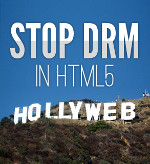From Wikipedia, the free encyclopedia
In mathematics, a syzygy (from Greek συζυγία ‘pair’) is a relation between the generators of a module M. The set of all such relations is called the “first syzygy module of M“. A relation between generators of the first syzygy module is called a “second syzygy” of M, and the set of all such relations is called the “second syzygy module of M“. Continuing in this way, we derive the nth syzygy module of M by taking the set of all relations between generators of the (n − 1)th syzygy module of M. If M is finitely generated over a polynomial ring over a field, this process terminates after a finite number of steps; i.e., eventually there will be no more syzygies (see Hilbert’s syzygy theorem). The syzygy modules of M are not unique, for they depend on the choice of generators at each step.
The sequence of the successive syzygy modules of a module M is the sequence of the successive images (or kernels) in a free resolution of this module.
Buchberger’s algorithm for computing Gröbner bases allows the computation of the first syzygy module: The reduction to zero of the S-polynomial of a pair of polynomials in a Gröbner basis provides a syzygy, and these syzygies generate the first module of syzygies.
Further reading


